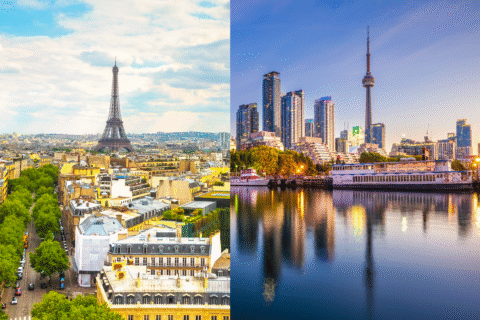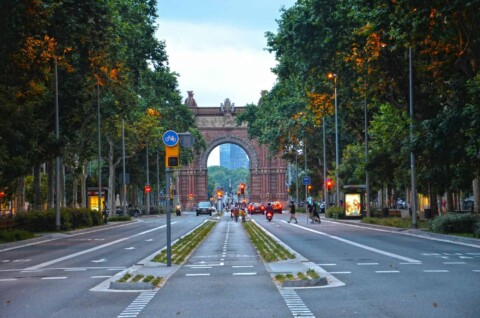There’s a growing problem in the travel industry that doesn’t get discussed enough in polite company: bad tourists are systematically destroying the experience for everyone else. From Venice to Bali, from Barcelona to Kyoto, communities and conscientious travelers alike are finding themselves increasingly frustrated by a subset of visitors who seem determined to extract every possible Instagram moment while leaving chaos, disrespect, and environmental damage in their wake.
This isn’t about gatekeeping travel or suggesting that only certain people deserve to explore the world. Rather, it’s about recognizing that as global tourism has exploded—international tourist arrivals reached 1.5 billion in 2019 before the pandemic—the impacts of inconsiderate behavior have become impossible to ignore. The question isn’t whether we should travel, but how we can create a sustainable system that protects destinations, respects local communities, and preserves authentic experiences for thoughtful travelers.
The Many Faces of Bad Tourist Behavior
Bad tourist behavior manifests in countless ways, but several patterns have emerged as particularly destructive and frustratingly common.
The Instagram Tourist prioritizes the perfect photo over everything else—safety, respect, and common sense included. These are the visitors who climb onto delicate historical monuments for selfies, trample protected wildflower meadows for that aesthetic shot, or create dangerous situations by stopping in the middle of highways or hanging off cliff edges. In popular destinations, you’ll see them forming long queues to recreate the exact same pose they saw online, turning what should be moments of genuine connection into performance art for social media validation.
The Entitled Traveler approaches foreign countries with an expectation that everywhere should cater to their home country’s standards and customs. They complain loudly when people don’t speak their language, demand familiar foods in traditional restaurants, and express shock that other cultures do things differently. This tourist sees their vacation as a purchase rather than a privilege, treating locals as service providers rather than human beings with their own lives and cultures.
The Party Tourist descends on destinations primarily to get drunk cheaply, often engaging in behavior they’d never consider acceptable at home. Prague, Amsterdam, Barcelona, and countless beach towns have struggled with tourists who treat these cities as consequence-free zones for public intoxication, noise pollution, and general debauchery. What’s fun for them becomes a nightmare for residents trying to sleep, work, or simply exist in their own neighborhoods.
The Oblivious Wanderer doesn’t necessarily have bad intentions but causes damage through sheer thoughtlessness. They touch museum artifacts despite signs, feed wildlife despite warnings about habituation and health risks, leave trash in pristine natural areas, or wander into sacred spaces in inappropriate clothing. Their defense is usually “I didn’t know,” but their failure to research basic etiquette before visiting speaks to a deeper disrespect for the places they visit.
The Cheapskate Tourist wants premium experiences at budget prices, often achieved by disrespecting local economies. They haggle aggressively with street vendors who earn a fraction of what they do, seek out “authentic” experiences while refusing to pay fair prices, stay in unlicensed accommodations that avoid taxes meant to support infrastructure, and generally treat the destination as a theme park that exists for their entertainment without considering the economic realities of the people who live there.
Cultural Ignorance: When Tourists Don’t Know (or Don’t Care About) Local Etiquette
One of the most persistent problems with bad tourists is their failure to learn or respect basic cultural etiquette in the countries they visit. What might seem like harmless behavior at home can be deeply offensive or even illegal elsewhere. Understanding these differences isn’t just about avoiding embarrassment—it’s about showing fundamental respect for the cultures hosting you.
In Japan, pointing with chopsticks, sticking them upright in rice, or passing food chopstick-to-chopstick are all associated with funeral rituals and considered highly disrespectful. Tourists who blow their noses loudly in public, wear shoes indoors, talk loudly on trains, or fail to bow appropriately when greeting people violate basic social norms. The concept of “meiwaku” (avoiding causing trouble or inconvenience to others) is central to Japanese culture, yet many tourists seem to consider their vacation a free pass from consideration.
In many Middle Eastern countries, showing the soles of your feet, eating with your left hand, or public displays of affection between couples can be offensive or illegal. In the UAE, tourists have been arrested for behavior considered acceptable in Western countries—from kissing in public to drinking alcohol in unauthorized areas. Dress codes require covered shoulders and knees in many places, particularly religious sites, yet tourists regularly show up in beachwear.
Thailand and other Buddhist countries have specific rules around religious sites and imagery. Touching someone’s head is offensive, as the head is considered sacred. Pointing your feet at Buddha statues is disrespectful. Tourists who pose inappropriately with religious imagery or wear Buddha images on clothing meant for the lower body show profound disrespect. Stepping over someone, raising yourself higher than a monk, or touching a monk (particularly if you’re a woman) all violate important cultural and religious norms.
In India, touching someone with your feet, using your left hand for eating or greeting, or pointing with a single finger are all considered rude. Public displays of affection are generally inappropriate, yet many Western tourists behave as they would at home. Religious sites have strict protocols, and tourists who enter temples in shoes or inappropriate clothing, touch sacred objects, or photograph ceremonies without permission demonstrate cultural insensitivity.
Mediterranean and Latin American cultures often operate on different time schedules and noise norms than Northern European or North American tourists expect. However, this doesn’t mean anything goes. In Spain, eating dinner at 6 PM and expecting restaurants to accommodate this shows disrespect for local customs. In Italy, ordering a cappuccino after 11 AM or with dinner marks you as ignorant of local culture, and cutting through church services to take photos is deeply offensive.
In Muslim-majority countries, the rules around Ramadan are important to respect. Eating, drinking, or smoking in public during daylight hours during Ramadan is offensive and illegal in some places. Entering mosques requires appropriate dress and behavior, including women covering their hair in most cases. Friday prayers are particularly important, and tourist disruptions are especially unwelcome.
Scandinavian countries value personal space, quiet public spaces, and environmental consciousness. Tourists who talk loudly on public transit, try to make small talk with strangers, or litter show disregard for deeply held cultural values. The concept of “lagom” in Sweden (not too much, not too little) or “janteloven” in Norway (don’t think you’re better than others) reflect cultural attitudes that many tourists violate.
In China, opening a gift immediately when received is considered rude (it should be opened privately later), finishing all the food on your plate at someone’s home can imply they didn’t provide enough, and tipping was traditionally seen as insulting (though this is changing in tourist areas). Sticking chopsticks upright in rice and writing someone’s name in red are both associated with death and funerals.
The problem isn’t that tourists occasionally make mistakes—that’s inevitable when navigating unfamiliar cultures. The problem is tourists who don’t even try to learn basic etiquette, who dismiss local customs as strange or backwards, or who believe that paying for a vacation exempts them from basic respect. A simple online search before traveling can prevent most of these violations, yet many tourists can’t be bothered with even this minimal effort.
Real-World Consequences: When Tourism Becomes Destructive
The impacts of bad tourist behavior extend far beyond mere annoyance. They create real, measurable damage to destinations, communities, and the travel experience itself.
Consider Venice, where the historic city receives approximately 25-30 million visitors annually—a staggering number for a resident population of just 50,000. The overwhelming crowds have contributed to dramatic population decline as locals are priced out by short-term vacation rentals and daily life becomes impossible amid the tourist hordes. Cruise ships have caused physical damage to the lagoon ecosystem, and the constant foot traffic erodes the historic buildings and bridges that tourists come to see.
Iceland provides another stark example. The country saw tourism grow from around 500,000 annual visitors in 2010 to over 2.3 million by 2018—nearly seven times its population. Popular sites like Fjaðrárgljúfur canyon had to be closed repeatedly because Instagram-famous visitors were destroying the fragile moss that takes decades to grow back. At Reykjadalur Hot Spring, tourists repeatedly ignored signs and trampled off designated paths, causing severe erosion. The country has had to invest heavily in infrastructure and enforcement just to prevent tourists from literally destroying the natural wonders they came to see.
Japan’s ancient capital, Kyoto, has struggled with tourists harassing geishas in the historic Gion district—following them aggressively for photos, grabbing their kimonos, and treating these trained artists as costumed theme park characters rather than professionals going about their work. The city implemented fines of 10,000 yen (about $90) for tourists who harass geishas in designated areas, a measure that would have been unthinkable a decade ago.
Mount Everest’s famous “death zone” now includes a less dramatic but equally troubling feature: tons of human waste and garbage left by climbers who apparently believe that paying for a permit exempts them from basic responsibility. The mountain’s garbage problem has become so severe that cleanup expeditions regularly haul down thousands of pounds of waste, including decades-old equipment, tents, and even human remains.
Barcelona became so overwhelmed by tourist behavior that locals began protest movements with slogans like “Tourists go home” and “Barcelona is not for sale.” The city receives around 30 million visitors annually, and the La Rambla district has essentially become a tourist monoculture where locals no longer shop or gather. Housing costs have skyrocketed as apartments convert to vacation rentals, and the noise and disruption from party tourists has made many neighborhoods unlivable for residents.
These aren’t isolated incidents—they represent a fundamental tension between tourism as an economic engine and the preservation of the places and cultures that make destinations worth visiting in the first place.
Why Is This Happening Now?
Several factors have converged to create the current crisis of overtourism and bad tourist behavior.
The democratization of travel has brought the incredible benefit of making global exploration accessible to more people than ever before. Budget airlines, alternative accommodations, and competitive pricing mean that trips once reserved for the wealthy are now within reach of middle-class travelers worldwide. However, this rapid expansion hasn’t been matched by education about responsible travel practices or infrastructure to handle the volume.
Social media culture has fundamentally changed why and how people travel. The pressure to document and share every experience has led to what some call “Instagram tourism”—visiting destinations primarily to capture the same viral photos everyone else has taken. This creates concentrated crowds at photogenic spots while less visually striking but culturally significant sites sit empty. It also encourages risky or disrespectful behavior in pursuit of unique content.
The experience economy has made travel a form of identity and social currency. People increasingly define themselves by the experiences they collect and share, creating pressure to constantly travel and document those travels. This can lead to checking off destinations like items on a shopping list rather than engaging deeply with places and cultures.
Anonymity and impermanence create a sense that vacation behavior doesn’t count. Tourists often behave in ways they never would at home because they don’t expect to face social consequences. They’re unlikely to encounter these strangers again, and they’ll be gone before any real accountability catches up with them.
Cultural disconnect means many tourists simply don’t understand the impact of their actions. Someone might feed wildlife without realizing they’re causing habituation that could lead to those animals being euthanized. They might take a selfie at a memorial without grasping its sacred significance. The gap between intention and impact can be enormous.
What Can Be Done? Solutions at Every Level
Addressing the bad tourist problem requires action from multiple stakeholders: travelers themselves, the tourism industry, local communities, and governments.
Individual Responsibility: Becoming a Better Tourist
The most important changes start with individual travelers committing to better behavior.
Research before you go. Spend time learning about local customs, dress codes, tipping practices, and cultural sensitivities before you arrive. Understanding why certain behaviors are offensive or harmful helps you avoid “didn’t know” situations. This doesn’t require extensive study—even 30 minutes reading a reputable guide can prevent major missteps.
Follow the platinum rule. The golden rule says treat others as you’d want to be treated. The platinum rule says treat others as they want to be treated. This means adapting to local norms rather than expecting locals to accommodate your preferences.
Support local economies fairly. Pay fair prices for goods and services, eat at locally-owned restaurants, stay in locally-owned accommodations when possible, and hire local guides. Remember that your “vacation budget” represents serious money in many destinations. Haggling aggressively with a street vendor over a dollar is extractive, not savvy.
Leave no trace. Whether in natural areas or urban settings, take all your trash with you, stay on designated paths, don’t remove natural or cultural objects, and leave places better than you found them. The “leave no trace” principles developed for wilderness travel apply equally to heritage sites and cities.
Ask permission. Don’t photograph people without asking, particularly in their homes, workplaces, or during religious ceremonies. Don’t touch artifacts, sacred objects, or other people’s property. These should be obvious rules, but they’re violated constantly.
Travel slowly and deeply. Instead of racing through ten countries in two weeks, spend more time in fewer places. This reduces your environmental impact, pumps more money into local economies, provides more meaningful experiences, and helps you develop actual understanding rather than collecting superficial impressions.
Accept that you might not get the shot. If getting a particular photo requires risky behavior, trampling protected areas, disrupting wildlife, or being disrespectful, skip it. Your social media engagement isn’t worth damaging the place you’re visiting.
Industry Responsibility: Tourism Operators and Platforms
The tourism industry bears significant responsibility for the behavior of tourists it profits from.
Tour operators should educate clients about responsible behavior as part of the booking process. Pre-trip orientations should cover cultural expectations, environmental protection, and respectful conduct. Some operators have begun requiring travelers to sign codes of conduct, which helps set expectations and creates accountability.
Accommodation platforms like Airbnb need stronger regulations to prevent the wholesale conversion of residential neighborhoods into tourist zones. Cities should be empowered to limit short-term rentals in residential areas, require hosts to be on-site, and collect appropriate taxes to fund infrastructure.
Social media platforms could do more to discourage dangerous or disrespectful behavior. Instagram and TikTok could add warnings to posts tagged at sensitive locations, actively remove content showing destructive behavior, and promote educational content about responsible travel. They could also reduce the algorithmic promotion of photos from overtouristed hotspots.
Travel insurance companies might consider clauses that void coverage for tourists engaging in prohibited or dangerous behavior. The financial incentive could encourage people to think twice before climbing barriers for selfies.
Cruise lines need to manage their impact more carefully, including limiting ship sizes, better distributing arrival times, requiring longer stays that benefit local economies, and educating passengers about respectful behavior.
Government and Community Solutions
Local and national governments have powerful tools to manage tourism and protect their communities.
Visitor caps and timed entry have proven effective at popular sites. Peru limits Machu Picchu to 2,500 visitors daily in two shifts. The Galapagos carefully controls visitor numbers and requires certified guides. Bhutan charges a daily tourist fee that funds conservation and infrastructure while keeping numbers manageable. These systems preserve the experience while protecting the resource.
Tourism taxes can fund infrastructure improvements, environmental protection, and community services strained by tourist volumes. Venice implemented a day-tripper fee. Amsterdam raised its tourist tax substantially. These fees help offset the costs tourism imposes on communities.
Designated zones can protect residential areas from tourist disruption. Barcelona and other cities have begun restricting new tourist accommodations in overtouristed neighborhoods while encouraging development in undervisited areas. This helps distribute tourism’s benefits and burdens more evenly.
Strict enforcement and meaningful penalties deter bad behavior. Rome fined tourists who damaged the Spanish Steps. Thailand fines visitors who feed monkeys. These penalties need to be large enough to matter—$50 won’t deter behavior, but $500 might.
Redirect traffic to less-visited sites and seasons. Tourism boards can promote off-season visits and lesser-known destinations that offer similar experiences without the crowds. Japan has successfully promoted rural regions to relieve pressure on Kyoto. Iceland promotes winter tourism to spread visitors across seasons.
Community voice must be central to tourism planning. Residents should have meaningful input into how tourism develops in their communities, including the right to say no to certain types of tourism or to cap visitor numbers.
Education and Culture Change
Perhaps most importantly, we need a broader cultural shift in how we think about travel.
Schools could incorporate responsible travel education into geography and cultural studies curricula. Teaching young people about sustainable tourism, cultural respect, and environmental protection creates a generation of better travelers.
Travel media and influencers bear responsibility for modeling good behavior. When influencers promote off-limits locations or risky behavior for content, they inspire thousands of followers to do the same. Using their platforms to educate and model respect could reverse this trend.
Certification programs for responsible travelers could create incentives for good behavior. Imagine a system where documented responsible tourism behavior earns you benefits like reduced fees, priority access, or special experiences. This gamifies good behavior in positive ways.
Storytelling that emphasizes connection over consumption can reshape why people travel. Media that celebrates deep cultural exchange, environmental stewardship, and meaningful learning over bucket lists and Instagram aesthetics could influence how people approach travel.
A Path Forward
The problem of bad tourists ruining experiences for good tourists—and for local communities—isn’t unsolvable. It requires acknowledging that unrestricted, unregulated tourism growth isn’t sustainable or desirable. It demands that we see tourism not as a one-way transaction where visitors extract experiences from destinations, but as a reciprocal relationship with responsibilities on both sides.
The solutions exist. We have successful models of sustainable tourism management, effective education programs, and enforcement mechanisms that work. What’s needed is the will to implement them widely and the cultural shift to support them.
For individual travelers, the choice is simple: you can be part of the problem or part of the solution. You can travel thoughtfully, respectfully, and sustainably, or you can be the tourist everyone else complains about. The world is an incredible place full of wonders worth protecting, and travel is a privilege, not a right.
The destinations we love won’t survive if we love them to death. But with conscious effort, we can ensure that future generations—both visitors and locals—can continue to experience the magic that draws us to explore in the first place. The question is whether we’ll make those changes before we’ve destroyed what makes these places special.
Travel should broaden our perspectives, connect us with different cultures, and inspire us to be better global citizens. When done right, tourism can support local economies, fund conservation, and create understanding across cultures. But none of that happens when bad behavior drives out thoughtful engagement.
The choice is ours. We can continue down the current path toward an increasingly Disneyfied world where authentic experiences are crushed under tourist hordes, or we can collectively decide that the places we visit matter more than our vacation photos. One path leads to ruin. The other leads to a world where travel remains a transformative force for good.
Which kind of tourist will you be?








